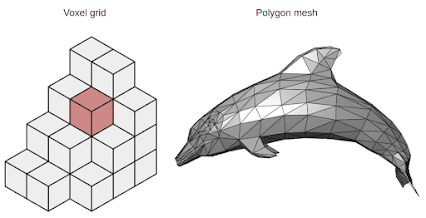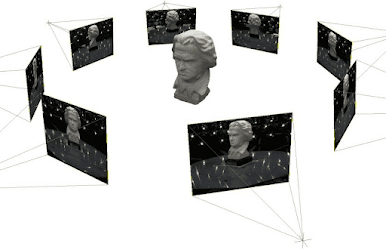Why Use Neural Fields?
The Neural Fields model has a number of key features that make it particularly well-suited for generating high-quality 3D models from 2D images:
Continuity: Because the NeRF model learns a continuous 3D function, it can generate smooth, continuous 3D models that do not have any "gaps" or "holes" in them. This is in contrast to methods that rely on discrete 3D points or voxels, which can result in models with discontinuities or artifacts.
High resolution: The NeRF model is able to generate high-resolution 3D models, with fine details and accurate shading. This makes it well-suited for applications where high-quality, photorealistic models are required.
Photorealism: The NeRF model is able to generate 3D models that are visually indistinguishable from real photographs of the scene or object. This makes it particularly useful for applications where realism is important, such as in computer graphics or virtual reality.
Efficient rendering: The NeRF model is able to efficiently render 3D models from any viewpoint, making it possible to interactively explore the model from different angles. This makes it well-suited for applications where real-time rendering is important, such as in virtual reality or augmented reality.
In the context of Neural Radiance Fields (NeRF), the term "fields" refers to the continuous 3D function learned by the model. Specifically, the NeRF model learns a function that maps positions in 3D space to the radiance (intensity and color) of the light that would be observed at that position in the scene.
This function is called a "radiance field," because it encodes the radiance of the light at each position in the scene. The term "Neural Radiance Fields" refers to the fact that this function is learned using a neural network. In short, the concept of fields is a central idea in the NeRF model, as it allows the model to generate continuous, smooth 3D models that do not have any gaps or discontinuities.
What are the steps to train a NeRF
According to the original paper of NeRF, here are the general steps to train a Neural Radiance Fields (NeRF) model:
- Collect a dataset of 2D images of the scene or object, along with their corresponding 3D positions and orientations.
- Preprocess the data by applying any necessary transformations or augmentations to the images and 3D positions.
- Define the neural network architecture of the NeRF model, including the number and types of layers, the number of channels in each layer, and any other hyperparameters.
- Initialize the weights of the neural network.
- Define the loss function that will be used to train the NeRF model. This loss function should measure the difference between the predicted radiance at each position in the scene and the true radiance at that position.
- Train the NeRF model by minimizing the loss function using an optimization algorithm, such as stochastic gradient descent (SGD). This involves feeding the model a batch of images and 3D positions, computing the loss, and updating the weights of the neural network using the gradients of the loss with respect to the weights.
- Continue training the NeRF model until the loss reaches a satisfactory level, or until a predetermined number of training, iterations has been reached.
- Evaluate the performance of the trained NeRF model on a separate test dataset to ensure that it is able to accurately generate 3D models of the scene or object.
- Collect a dataset of 2D images of the scene or object, along with their corresponding 3D positions and orientations.
- Preprocess the data by applying any necessary transformations or augmentations to the images and 3D positions.
- Define the neural network architecture of the NeRF model, including the number and types of layers, the number of channels in each layer, and any other hyperparameters.
- Initialize the weights of the neural network.
- Define the loss function that will be used to train the NeRF model. This loss function should measure the difference between the predicted radiance at each position in the scene and the true radiance at that position.
- Train the NeRF model by minimizing the loss function using an optimization algorithm, such as stochastic gradient descent (SGD). This involves feeding the model a batch of images and 3D positions, computing the loss, and updating the weights of the neural network using the gradients of the loss with respect to the weights.
- Continue training the NeRF model until the loss reaches a satisfactory level, or until a predetermined number of training, iterations has been reached.
- Evaluate the performance of the trained NeRF model on a separate test dataset to ensure that it is able to accurately generate 3D models of the scene or object.




Comments
Post a Comment